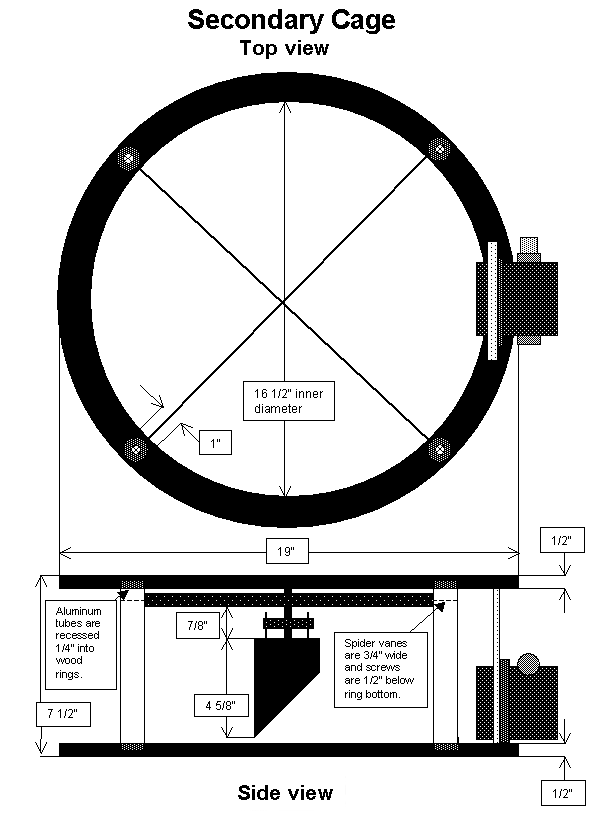

A key decision in the design of a telescope is choosing which size secondary mirror to use. It is one of those decisions where trade offs have to be made. If the secondary is too large, then obviously light from the primary will be lost and the larger central obstruction will diminish image brightness. While this of course is an issue, it is a relatively minor one. The bigger problem is that as the secondary grows larger, image contrast quickly diminishes.
If the secondary is too small, then the field of view won't be fully illuminated. The good news is that beyond the edge of the field of view, the image is still partially illuminated. According to Kriege and Berry, brightness falls off "quite gradually" as one moves beyond the edge. Kriege and Berry say that Dobs under 16" in aperture need a fully illuminated field of view of about 12mm (about 1/2"), which is the value I use. Bigger Dobs can use values between 12mm and 20 mm.
The secondary's minor axis dimension ("a") is arrived at via the following calculations:
8.25" Radius of the secondary cage (inner diameter/2)
+ 1.40" Focuser maximum in travel
+ 0.25" Focuser board height
+ 0.60" Extra travel in the focuser for different eyepiece needs
-------
L = 10.50" Distance from the center of the secondary to the focal plane
d = 0.50" Fully illuminated field of view
D = 15.00" Diameter of primary
F = 67.50" Focal length = 15.0" * f4.5
(D-d)L (15"-0.5")10.5"
a = d + ------ = 0.5" + --------------- = 2.76"
F 67.5"
The closest standard secondary mirror size to 2.76" is 2.60", which is the size of the secondary in the Miatascope.
Back to the Miatascope home page.
Last updated 1/12/06